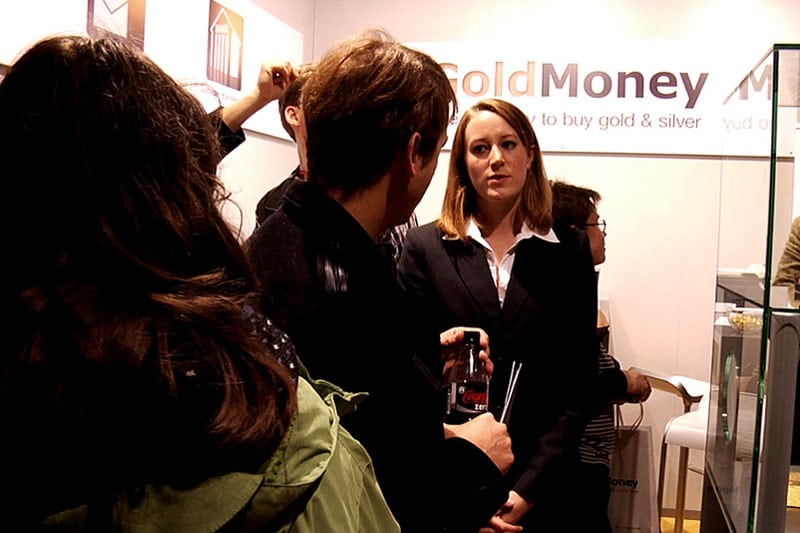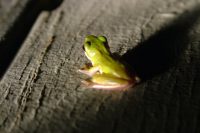
Are you currently working? Who do you serve in your job: internal customers or external customers (clients, distributors, end consumers)? How would you rate the service you provide to these people?
Poor Customer Service: An Incident
Two weeks ago, I was out shopping for video production equipment. I decided to check out a local electronics and IT equipment mall.
At the Mall
Once I reached the mall, I started the usual shopper routine: checking out the products on sale, learning about the product differences, and inquiring about the best deals at each store.
I had minimal knowledge of video equipment so I wanted to educate myself before purchasing anything. I definitely wanted to get a new camcorder that day because I wanted to work on my video channel right away.
While I was browsing a shop on the second floor, one of the guys in the store, whom I believe was the owner, exemplified everything one should not do in customer service.
A Sales-Driven Approach
It was okay initially when I was outside the shop. He was very friendly and welcoming.
But after entering the shop space, I felt something was amiss. It was obvious from the way he was speaking that sales were his primary objective while my needs as a customer… not so much.
To begin with, he kept singing praises of his shop and his service, rather than attending to my needs as a customer. This was despite the fact that I had no inquiries about his shop and was only interested in learning about the products.
Then with each question I asked about a camcorder, he would jump right to the price and discount/deal he was going to give — rather than show me the product, tell me about its features, and tell me the differences vs. other models. He kept pressing numbers on his calculator to show me his best price offer if I bought X from him, when I didn’t even know what the product could do.
It felt like he was expecting me to buy something right there and then. While I did want a new camcorder, I didn’t want to commit to a purchase just yet. I still had no idea what were the camcorders in the market, if the camcorder would best fit my needs, and the deals the other stores had.
Serving with Expectations
When I told him I was browsing and not buying yet (a disclaimer so he wouldn’t attach expectations to serving me), a frown appeared on his forehead.
He told me flatly that he was a businessman and suggested he was not going to serve me if I wasn’t intending to buy as it would be wasting his time. He said I would get the same treatment in any other stores if I was just intending to browse, because “times are bad today and no one wants to spend their time on people who only want to browse.”
Voice of Negativity
Alarmed at his expectation that I had to buy something for him to serve me, I decided to keep the interaction short. I politely told him I would check out other stores then, so as not to take up his time.
I thought he would be happy to have me go away since I did tell him I could not commit to buying from him. But then he voiced his disapproval again.
He told me there was no point checking out other stores because his store had the largest, most complete collection of camcorders in the whole mall. He asked me what was the point of “browsing only” — “walking from store to store, touching the products, walking in circles in the mall” (his verbatim) — I would only be wasting my time. He said if I was “truly sincere about buying a camcorder,” he would help me. He rounded up his semi-outburst by saying “fine by him” if I was going to check out other shops, but the person who would lose out at the end of the day — or “the biggest loser,” in his words — would be me, because I would be going home empty-handed.
Deciding It Was Not for Me
After 10-15 minutes of back-and-forth, I decided it was pointless staying in the shop. I thanked him for his time and said I was going to check out other stores. I said I would return later if I was still interested.
As I turned to leave, I heard a loud slamming noise, made from the smacking of a pen on a table surface. I continued to walk out, making a mental note that I wasn’t going to return to this shop again.
Lessons Learned From the Encounter
With every encounter, there are always lessons to be learned. This is no different.
- Successful sales start with having the customer’s needs in mind. The guy didn’t try to understand my needs. He didn’t ask me anything about why I was looking for a camcorder or what functions I was looking for. All he was interested in was clinching the sale, which then made me skeptical about purchasing anything from him. Even if he did have the best price deals, even if his store had the largest selection of camcorders, I found it hard to trust any of his recommendations, because I didn’t know if they were made in consideration of my needs or his agenda.
- Less talking, more listening to what your customers want. Part of the reason I was turned off by his service attitude was that he kept boasting about his shop and his array of products which were not even my concern. My only interest was to get a good camcorder that would satisfy my recording needs. If he had bothered to listen to the customer, he would have known that.
- Respect your customer as an individual — don’t talk down to him/her. I didn’t like how the guy used coercive and fear-based tactics to get me to (a) stay in the shop and (b) commit to a purchase. It’s a terrible way to build goodwill for sure.
- Good service shouldn’t be contingent on a purchase. I didn’t like the idea that I *had* to buy something at his shop when I didn’t even know what I was looking for. It felt coercive. The funny thing was if he had served me without expectations, I might have bought my camcorder from him — because his shop had a large array of camcorders and he did seem keen on giving me a good price to close a sale. But I am happy to pay a higher price elsewhere if it means getting better service and more space to make my purchase decision.
- Sometimes, it’s really not about the price. Having a competitive price is important, but beyond that, it’s about the overall value you deliver — which includes the service provided.
(Note I’m using “sales” as a collective term. If you are a service provider, then the ”sales” in question is your service.
How To Win Customers and Clients Over: 10 Elements of Great Customer Service

While retail immediately comes to mind as the platform where customer service is key, the fact is that customer service is key regardless of the industries we are in.
Everything we do in our work is to serve someone. For those of you working in retail, customer service, restaurants, or other frontline services, it would be the end consumer (who purchases your company’s products). For those of you working as freelancers, agents, contractors, vendors, coaches, or consultants, it would be the client (who engages your services). For those of you working in corporations, your immediate customers would be the other departments in your company.
Do you have a customer-centered approach in your job/business? Are you providing the best possible service to them? Would your consumers/clients/customers give you a top 10/10 rating if they were to rate your service?
In today’s guide, I share 10 elements of great customer service. For easy reference, I’ll collectively refer to customers, clients, and consumers as customers.
1. Have an A* attitude
Do you serve your customers with an A* attitude? Or do you service them like you are doing them a favor?
I recall a lousy service encounter while I was on Delta Airlines, flying from London to Detroit. It was my first time on Delta, and while many had warned me of their poor service, I kept an open mind on what to expect. At one point I tried to borrow a pen from the crew (to fill out my immigration card). I pressed the button to call for an attendant — 10 minutes, but no response. So I pressed it again, same thing — no response even after 15 minutes. I don’t know, but it felt like they were intentionally ignoring passenger calls.
Anyway, after almost 30 minutes of waiting, I tried to flag down the air stewardesses instead. It took me several attempts before I was finally able to get one stewardess to attend to me. When I asked her if she had a pen that I could borrow, she said “Sorry honey, no” and strutted off, leaving me with my mouth hanging in shock.
Now I don’t know if this is the normal service standard for Delta (it would seem so based on the poor feedback from friends who took Delta before), but I thought it was very poor service, especially benchmarking against the likes of Singapore Airlines. I found it hard to believe there wasn’t one single pen in the entire aircraft — it felt more like the stewardess could not be bothered, which was probably true.
What makes up an A* attitude? Many qualities, but these are good basics to start with:
- Courtesy – Being amiable, adhering to mannerisms, and treating the customer with respect.
- Positivity – Handling each request with a positive attitude without complaints; Not letting one’s emotions come into the way.
- Attentiveness – Being sensitive to the customer’s needs.
- Willingness – Servicing the customer with eagerness and enthusiasm. Passion for the work he/she is doing.
Here’s a real-life example illustrating the importance of an A* attitude. A few weeks ago, I posted a job on Elance, looking for a video editor for my video channel. Out of seven candidates, I narrowed it down to two contractors, Candidate A and Contractor B. Both charged about the same rate and A had a somewhat more impressive portfolio. But I went with B in the end because he was very positive, eager to deliver, and immediate in his responses. I figured if I was going to work with someone, I’d prefer it be someone whom I enjoy working with, provided the quality of work delivered was on par.
(Eventually after a trial project, I decided to handle the video editing myself so I would have full control over the output. But if I do outsource in the future, I would surely consider engaging Candidate B again.)
2. Understand the customers’ needs

(Image: wavebreakmedia)
Rather than jump straight into providing the product/service, take time to understand your customers’ needs first. This way, you can provide a product/service that best caters to their needs.
For example, back when I did 1-1 coaching, I would never start the sessions until I had a firm grasp of what the clients needed. They were paying good money for me to guide them so I wanted them to get the best value out of our time together.
So whenever a client first signed up, I would send them a mandatory list of questions to answer so I could understand what they were seeking coaching on. For the clients that signed on for a package of 8 sessions, I would throw in a 30-minute introduction session, at no cost, to get to know them better and to lay down the groundwork for the 2 months ahead.
Doing so helped me to better understand their needs so I could cater the sessions accordingly. As a result, my clients would get a lot of value from the sessions, even though each session was merely an hour long.
Another example is my training workshops (when I was still doing training in the past). My first step was always to know the audience I was going to speak to, their motivations for attending this workshop, and the help they needed. Only then would I design the workshop content. This way, the entire workshop was catered to the attendees. For the same reason, my workshops often received high ratings on the feedback forms. Many workshop participants would often sign up for my subsequent workshops, hence becoming repeat customers.
As a consumer, I gravitate towards businesses that understand my needs. For example, a few weeks ago I was shopping for clothes. In one of the stores I went to, the assistant tried to understand the occasion I was buying the clothes for first, before giving recommendations — rather than shove items in my face which some retail assistants have a knack for doing. As a result, I have been frequenting that particular store. Another example is when I went shopping for a new laptop last month. The store assistant whom I bought my laptop from did a great job understanding my needs. I told him I was going to use my laptop for video editing work, and my budget, and he told me the specs that I should look at, and recommended me a laptop that met what I was looking for. After browsing a few shops, I eventually returned to purchase from that assistant, because he was the only one who was able to give me the best recommendation and the best deal.
How well do you understand your customers? Do you recommend the product and cater your service to match their needs? The more you understand your customers, the better you address their needs, the more satisfied they will be, and the more likely they will return in the future.
Here are some questions you should know the answers to. (Some may not be relevant depending on what you do):
- What are your customer’s needs? (Things which he/she absolutely must have – the non-negotiables)
- What are your customer’s wants? (Things which he/she wants but can do without – the nice-to-haves)
- What motivates him/her to get this product/service?
- What does your customer consider a top-quality product/service?
- What does your customer want to achieve with your product/service?
3. Provide the product/service that best meets their needs (not yours)
The product/service you provide to them should be a match for the needs you uncovered in the second step. Process their requirements duly and provide the product/service that meets those needs. Don’t project your preferences onto your customer, unless it’s something you feel very strongly about, or unless the customer asks you for your opinion.
For example, if I have clearly specified that I want a pink camera, I will find it pretty annoying if the salesperson keeps advising me to get a black one instead. When that happens (when the salesperson advises me against my original criteria), I tend to get discouraged, confused, and end up not buying anything instead. I’ll then go to another shop where the assistant honors my needs accordingly, and buy what is recommended based on the criteria that I supplied.
4. Do not serve with expectations
The best service comes from within, when you serve without expecting anything in return, be it an eventual purchase by the customer, or a (big) tip (if you’re in the service industry). Deliver your best service to everyone, and let the customer decide what he/she wants to do. Even if he/she does not purchase or tip you, it doesn’t mean your service wasn’t good – it could well be other reasons not related to your service at all.
5. Give them options
I think it’s always good to have options to pick from.
For example, I recently hired a graphic designer to help me out with my manifestos. For each project, he would present two design proposals based on my specifications. Doing so made it easy for me to identify what I *didn’t* want and what I was looking for, vs. having only one option and wondering what other designs I could have gone with. Customers sometimes don’t know exactly what they want (beyond broad ideas), and by giving options, it helps them with the decision-making process.
Or say, if I’m shopping for a camera where there are countless models in the market and I have no idea what’s good and what’s not, I would like the sales assistant to help me narrow down to 2-3 models based on my needs, after which I can make my evaluation. This makes me feel like I’m in charge of the selection process vs. having just one option, where I’m expected to either choose it or drop it.
Of course, I don’t think it’s necessary to provide options all the time. If the client is extremely clear on his/her needs, and you think this one product/service meets all he/she is looking for, then go ahead with your best proposal.
6. Promptness is a virtue

I really value businesses that provide prompt service. I think speed is of the essence in any business in today’s world, where time is a highly valued commodity. This includes retail, restaurant industry, delivery services, customer services, consulting work, and many more.
One of the things I like about my current web host is the immediacy they handle my queries. Every support ticket I send is always responded to within 24 hours, sometimes in 1-2 hours. It seems that they have support staff available 24/7 to respond to the tickets. This is one of the reasons I have been with them for the past 1.5 years. For any issue at PE which doesn’t get resolved promptly, it costs me time (and money) that could be better invested in new projects. That snowballs into big losses in the long run.
With my VA (virtual assistant) team, I expect my requests to be promptly addressed too. A slow team slows down the development of my projects, for every task I assign is tied with other tasks, and I don’t want to assign more work until the previous batch of work is completed. With a fast team, a lot more gets accomplished in a shorter amount of time. I don’t mind paying slightly more if that means getting better and faster output.
Prompt service also shows you value your customers, you prioritize their needs, and you respect their time. I have been to shops and restaurants where I don’t get served even after waiting for some time, even after asking to be served.
Case in point: A month ago I was shopping for LED lights (again for my video channel). In one of the shops I entered, this shopkeeper was busy chatting with some guy (not a customer), blatantly ignoring me for a good 10 minutes – all while I was standing right beside him, waiting to be attended to with my inquiries.
When I finally tried to get his attention with a “Excuse me”, he ignored me — five times in a row – before he finally raised his palm to me, signaling he wasn’t going to serve me until he was done chatting. With these businesses, I never stay on there — I simply leave, because I know there are tons of businesses out there that offer better service and less wait time, and hence deserve my money.
So what does promptness entail?
- Attending to your customers quickly when they have a request
- Addressing their inquiries within a reasonable time frame
- Being sensitive to their needs (Checking on them from time to time, vs. having them flag you down for your attention)
- Not letting them wait beyond a reasonable wait period
- Following up promptly
7. Be an expert in the product/service
It’s not going to work out if the staff is prompt and courteous, but can’t deliver the work in question. An example would be a sales assistant who has weak product knowledge, a graphic designer who has a poor eye for design, a consultant with limited knowledge of the industry, or a customer support officer who doesn’t know the information at the back of his/her palm, a server who can’t give you any recommendations from the restaurant’s menu, and so on.
Great service, beyond having the right approach and attitude, also requires you to be well-versed in your work. After all, this is the core of your product/service offering – if you don’t have “cake”, doesn’t matter if you have the best “icing” in the world. Be sure to equip yourself with the best skills of the trade, get the best tools to deliver the best work, and update yourself on the latest developments in the industry.
8. Professionalism is crucial
How professionally do you handle your customers? Does your level of service falter depending on your mood? Do you let your personal agendas interfere with your work?
I think I can be quite the impatient customer at times, especially when something important is at stake. For example, PE has been going down quite often in the past few months, sometimes because of the site requirements exceeding the server resources, other times because of some server configuration issues. What I like is that the technical support team always follows up on every ticket without fail, troubleshooting the issue step-by-step until the problem is resolved, vs. abandoning the ticket (I suppose they can’t do that, but I still appreciate their professional attitude).
Being professional requires you to be consistent in your quality of service, be respectful despite the situation, deliver your work in a timely manner regardless of circumstances, and always deal with the issue at hand, rather than the individual.
9. Ensure full customer satisfaction
Check if all needs have been addressed
Don’t assume all the customer’s needs are met just because you attended to his/her initial request. Check if he/she has any other things you can help with. Sometimes, he/she may well do – just that they remain unvoiced. This is especially so in Asia, where customers keep their concerns to themselves unless asked.
Ask for feedback

Sometimes, what you think is great service may not be the case. The customer may have a totally different perception, and unless you ask him/her, you’ll never know. If you want to improve your service to the next level (and I believe all of us here at PE are passionate about betterment), getting feedback is essential.
Create a customer feedback survey, to be issued at the end of your service. If you are working with your customer on a project, it may serve you well to have a mid-term feedback session, where you gather feedback to improve the second half of the engagement. Include the following questions:
- On a scale of 1-10 (1 being the lowest, 10 being the highest), how satisfied are you with the service provided?
- Were we able to meet your needs? If not, why not?
- (If the customer purchased a product) Does the product meet your needs? If not, why not?
- What are the key things you like about the service?
- How can we serve you better in the future?
- Will you recommend us to others? Why or why not?
The feedback can be very revealing. In the early stages of my endeavors, be it when I started 1-1 coaching (I don’t do them anymore), conducted workshops, or started the online challenges, I have benefited tremendously from actively soliciting feedback from my clients/participants. By that, I mean actively giving feedback forms (with the questions above and more), requesting my clients/participants to fill them with their honest opinions, and proactively improving upon the feedback, vs. settling for status quo. Likewise, you can definitely benefit greatly from asking for customer feedback.
(Those with Be a Better Me in 30 Days, read Day 14: Get Feedback From Others.)
10. See your relationships with customers as long term
The service does not end after the initial encounter. Neither does it end with the closing of the sale, the delivery of the product, nor the completion of the work. The first contact point with your customer is actually when your relationship with the customer starts.
Do you know that in many businesses, 20% of the customers make up 80% of your revenue? (The 80/20 principle applies to many other things in life too — read the 80/20 principle series.) You have fought so hard to win over your customers — what you should do now is treasure them and provide them with even better service, not chunk them aside, thinking that your work is complete.
If the customer was merely making an inquiry in the initial encounter, follow up to see how they are doing with their purchase decision and if they need any more assistance. If they have already purchased the product from you, follow up and check on their product usage experience. If it’s a service engagement and all work has been completed, check how your customer is doing post-engagement and if he/she needs any more help from you.
Follow up every few months, or as frequently as necessary, to maintain the relationship. Your relationship with your customer is for life, or as long as you plan to run your business. And if your relationship with your customer evolves into a friendship, that would be a big bonus!
Concluding Note
I hope you found this guide on customer service useful. Apply them in handling your customers and let them be won over by your great service offering.
Of course, there will always be unreasonable customers no matter what industry you are in. These are the 20% customers that cause 80% of your pain — and probably not the customers you want to have in your business. If you run your business, perhaps you want to consider dropping these customers — there are the other 80% customers who can benefit more from your time.
Get the manifesto version of this article: The Customer Service Manifesto
(Images: Cashier, Customer service, Meeting, Clock, Rating)








 Thanks for reading. If you like my free articles, join my private email list and get my latest updates and articles sent right to your inbox.
Thanks for reading. If you like my free articles, join my private email list and get my latest updates and articles sent right to your inbox.